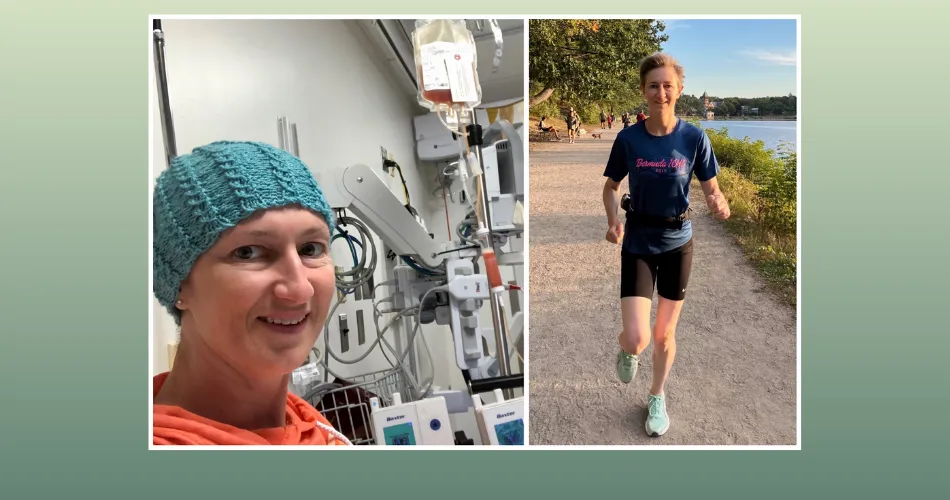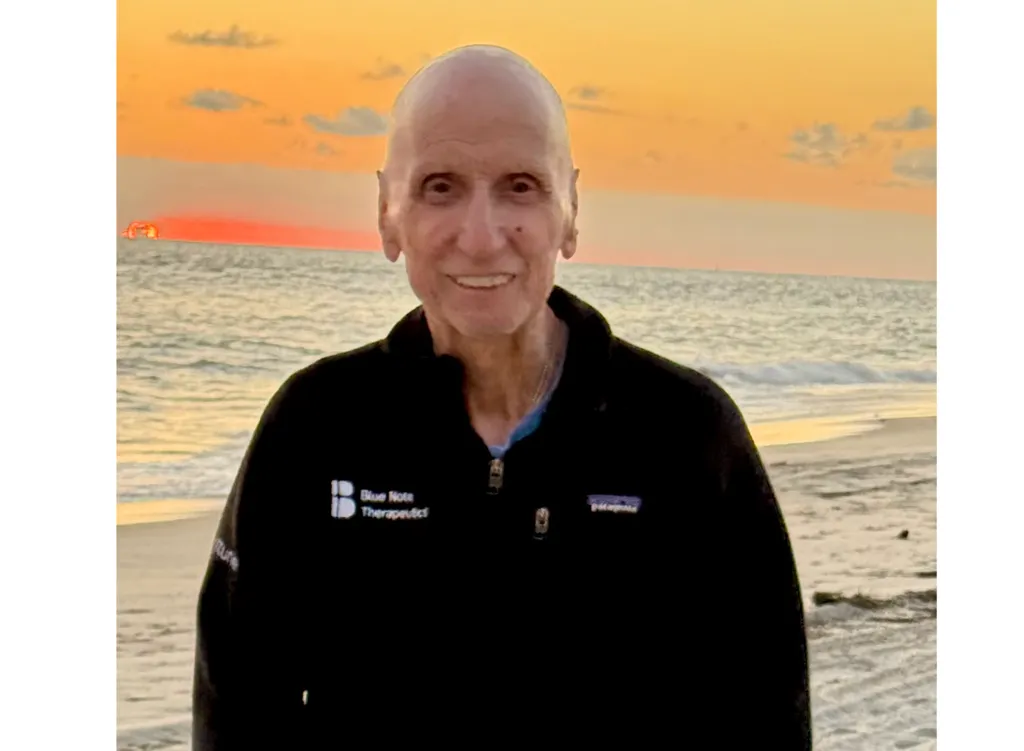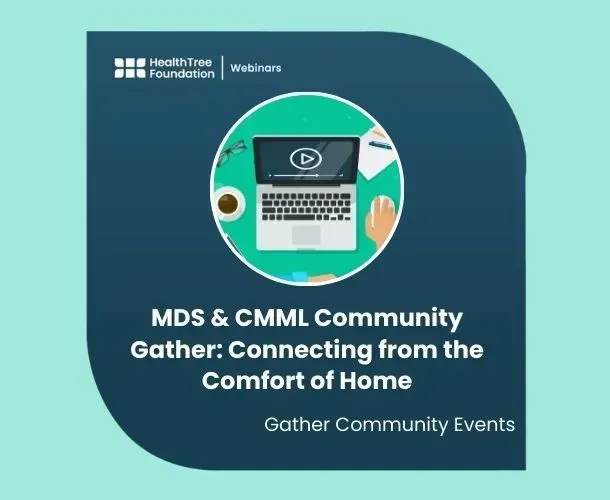AML Treatments
Acute Myeloid Leukemia (AML) can be an overwhelming diagnosis, but understanding the range of treatment options available is the first step in taking control of the journey ahead. Whether you're a patient or a caregiver, knowledge is power when it comes to navigating therapies that aim to manage or potentially cure AML. In this comprehensive guide, we’ll explore the AML treatments, from traditional chemotherapy to promising new targeted therapies and immunotherapies, providing a clear and concise overview of what you can expect and how each approach works. Read on to gain the insights you need to make informed decisions and feel empowered every step of the way.
Currently, there are seven types of treatment options that can be used:
- Chemotherapy
- Radiation therapy
- Chemotherapy with stem cell transplant
- Targeted therapy
- Maintenance therapy
- Clinical trials
- Supportive therapy
The type of treatment a patient receives depends on several factors, including age, health status, level of fitness, genetic mutations, AML classification, and the patient’s goals.
You can learn more from our comprehensive videos on AML treatments with our free HealthTree University courses!
Know Your Therapy With HealthTree University
Chemotherapy for Acute Myeloid Leukemia
This is the main form of treatment for AML. Chemotherapy is a type of cancer treatment that uses one or more anti-cancer medications as part of a standardized chemotherapy regimen. They may be administered intravenously or orally.
Chemotherapy for AML often occurs in two phases: induction and consolidation.
Induction Therapy
Induction therapy is the first phase of treatment. It is a short and intensive treatment with the goal of quickly removing as many leukemia cells as possible. This hopefully puts the AML into remission. The treatment is usually made up of two drugs, cytarabine and an anthracycline drug, either daunorubicin or idarubicin. Cytarabine is given continuously for 7 days, and the anthracycline medication is given in 3 daily doses during the first 3 days. This regimen is called “7+3”. A third drug may be added to increase the chances of remission for people with certain AML subtypes.
- For patients with FLT3 mutation, the targeted therapy midostaurin (Rydapt) might be added. This is taken twice daily as a pill.
- For patients whose leukemia cells have the CD33 protein, the targeted medication gemtuzumab ozogamicin (Mylotarg) might be added.
Typically a week after induction therapy is completed, a bone marrow biopsy will be collected. If it shows that the blasts make up less than 5% of the bone marrow, the leukemia is considered to be in remission. If it shows >5% blasts, another round of chemotherapy may be given either with the same medications used before or with different ones. Induction therapy typically gets rid of most of the cancer cells, but there is often some left behind. This is why consolidation therapy is important and necessary.
Consolidation Therapy
Consolidation therapy or “post-remission” therapy, is the second phase of treatment. The goal of consolidation therapy is to kill any remaining leukemia cells that may not be active but could begin to regrow and cause a relapse. For patients less than 60 years old or those over 60 years old who are considered medically fit, consolidation options are typically several cycles of high-dose cytarabine and possibly an allogeneic stem cell transplant. If receiving cytarabine, it is given at very high doses, typically over 5 days. This is repeated about every 4 weeks, usually for a total of 3 or 4 cycles. An allogeneic stem cell transplant may occur after the cytarabine cycles.
Other therapies are considered for those who may not be able to tolerate consolidation treatment. Lower-dose cytarabine, azacitidine, venetoclax, glasdegib, and other targeted therapies may be appropriate treatment options.
Radiation Therapy
Radiation therapy uses high-energy radiation to kill cancer cells. It is usually not part of the main treatment of AML, but there are certain circumstances in which it could be used:
- If the AML has spread outside of the bone marrow and blood, such as to the brain and spinal fluid
- If the patient is going to undergo a stem cell transplant, radiation to the whole body may be administered prior to treatment
- If the patient is experiencing bone pain as a result of AML, radiation may be used to reduce pain if chemotherapy has not helped
Allogeneic Stem Cell Transplant
Allogeneic stem cell transplant is the most common type of stem cell transplant used in AML. In this type of transplant, stem cells come from someone other than the patient. A donor is usually a person whose tissue type closely resembles the patients. After completing consolidation therapy, the patient will receive an infusion of donor stem cells into their bloodstream where they will travel to the bone marrow to begin making new blood cells. It takes a few weeks for the donor cells to settle in your bone marrow and begin making new cells. Patients will remain in the hospital and receive blood transfusions and frequent monitoring until the bone marrow recovers.
Targeted Therapies
Targeted therapies are medications that target specific parts of cancer cells. They can sometimes work better than certain chemotherapy agents or may be added to chemotherapy regimens to improve their effectiveness. Because the type of leukemia cells in every person with AML is not the same, not all targeted therapies are appropriate for every patient. The type of targeted therapy a person needs depends on their subtype of AML, genetic mutations, chromosomal abnormalities, and surface proteins present.
Here are some of the most commonly used targeted therapies:
FLT3 Inhibitors
Some people with AML have a mutation in the FLT3 gene. This gene helps the cells make a protein (also called FLT3) that helps the cells grow. By inhibiting this protein, AML leukemia cells are less likely to be able to grow. Midostaurin (Rydapt) and Gilteritinib (Xospata) are FDA-approved FLT3 inhibitors that are both taken orally. Midostaurin can be used in combination with chemotherapy in newly diagnosed FLT-3 mutated AML. Gilteritinib can be used as a single agent in relapsed or refractory FLT3-mutated AML.
IDH Inhibitors
Some people with AML have a mutation in either the IDH1 or IDH2 gene. These genes help the cells make IDH1 and IDH2 proteins. Mutations in these genes can stop blood cells from maturing the way they normally would. Using IDH inhibitors to block IDH proteins helps the leukemia cells to mature into more normal cells. Ivosidenib (Tibsovo) and Enasidenib (Idhifa) are FDA-approved IDH inhibitors that are both taken orally. Ivosidenib can be used in newly-diagnosed IDH1-mutated AML with patients who are at least 75 years old or who have conditions that exclude them from intensive chemotherapy. Enasidenib can be used in adults with relapsed or refractory IDH2-mutated AML.
Gemtuzumab Ozogamicin (Mylotarg)
This is a monoclonal antibody-targeted therapy combined with a chemotherapy agent. Monoclonal antibodies are man-made immune proteins. This antibody specifically attaches to the CD33 protein which is found on the surface of most AML cells. This antibody attaches to the CD33 protein and allows the chemotherapy to enter the leukemia cell. Inside, the medication kills the cell when it tries to divide into new cells. It is FDA approved for newly diagnosed CD33-positive AML or relapsed or refractory CD33-positive AML. It can be used alongside initial chemotherapy or by itself. It is most often used in patients with newly diagnosed AML in combination with 7+3 chemotherapy.
BCL-2 Inhibitor
BCL-2 is a protein present in cancer cells that allows them to live longer. Venetoclax is a medication that inhibits this protein, interfering with the growth of the cancer cells. This is an oral medication that has been FDA-approved for newly diagnosed AML in adults who are aged 75 years or older or for those who have comorbidities that preclude the use of intensive induction chemotherapy. It can be used in combination with azacitidine, decitabine, or low-dose cytarabine.
Hedgehog Pathway Inhibitor
The hedgehog pathway is a signaling pathway that can be overactive in leukemia cells. This overactivity can promote the growth, survival and proliferation of cancer cells. Glasdegib (Daurismo) is a medication that targets a protein in this pathway to restrict cancer growth and progression. This is FDA-approved for newly diagnosed AML in patients who are 75 years old or older or who have conditions that keep them from tolerating intensive induction chemotherapy. It is taken orally and used in combination with cytarabine.
Maintenance Therapy
In acute myeloid leukemia (AML), the bone marrow produces abnormal cells that cannot mature and do not function properly. Resulting in abnormal cell build-up in the bone marrow and blood. Chemotherapy is the main maintenance treatment for AML. Maintenance chemotherapy may be given to people with AML with intermediate or unfavorable chromosome changes who cannot have a stem cell transplant. Maintenance chemotherapy is most commonly given as oral azacitidine (Onureg).
Onureg (azacitidine) is an antimetabolite, which means that it works by disrupting the DNA production of abnormal cells (hypomethylation), the genetic material that controls the growth and function of these cells. Causing the death of rapidly dividing cells, including cancer cells no longer responsive to normal growth control mechanisms. This could also restore normal function to genes critical for differentiation and proliferation.
This medication has been approved as maintenance therapy in adult patients with acute myeloid leukemia (AML) who achieved complete remission (CR) or complete remission with incomplete blood count recovery (CRi) following induction therapy with or without consolidation treatment and who are not candidates for, including those who choose not to proceed to, hematopoietic stem cell transplantation (HSCT).
Learn More at HealthTree University
Clinical Trials
Joining a clinical trial is a great way to access new medications that are not yet widely available to most people with AML. Patients who participate in clinical trials can be some of the first to receive a treatment before it is available to the general public. Whether or not to participate in a clinical trial is an important conversation to have with your medical team. You can look for more personalized clinical trial options with our easy-to-use clinical trial finder.
Supportive Therapies
Sometimes, a patient may choose not to undergo any treatment at all. The focus then becomes maintaining the highest quality of life possible. Supportive therapy includes managing side effects, which may include pain medication, blood transfusions, and infection management.
Stay Informed with HealthTree News
Explore the latest AML news, including patient stories, treatment breakthroughs, and expert insights so you can make confident, informed decisions.
Acute Myeloid Leukemia (AML) can be an overwhelming diagnosis, but understanding the range of treatment options available is the first step in taking control of the journey ahead. Whether you're a patient or a caregiver, knowledge is power when it comes to navigating therapies that aim to manage or potentially cure AML. In this comprehensive guide, we’ll explore the AML treatments, from traditional chemotherapy to promising new targeted therapies and immunotherapies, providing a clear and concise overview of what you can expect and how each approach works. Read on to gain the insights you need to make informed decisions and feel empowered every step of the way.
Currently, there are seven types of treatment options that can be used:
- Chemotherapy
- Radiation therapy
- Chemotherapy with stem cell transplant
- Targeted therapy
- Maintenance therapy
- Clinical trials
- Supportive therapy
The type of treatment a patient receives depends on several factors, including age, health status, level of fitness, genetic mutations, AML classification, and the patient’s goals.
You can learn more from our comprehensive videos on AML treatments with our free HealthTree University courses!
Know Your Therapy With HealthTree University
Chemotherapy for Acute Myeloid Leukemia
This is the main form of treatment for AML. Chemotherapy is a type of cancer treatment that uses one or more anti-cancer medications as part of a standardized chemotherapy regimen. They may be administered intravenously or orally.
Chemotherapy for AML often occurs in two phases: induction and consolidation.
Induction Therapy
Induction therapy is the first phase of treatment. It is a short and intensive treatment with the goal of quickly removing as many leukemia cells as possible. This hopefully puts the AML into remission. The treatment is usually made up of two drugs, cytarabine and an anthracycline drug, either daunorubicin or idarubicin. Cytarabine is given continuously for 7 days, and the anthracycline medication is given in 3 daily doses during the first 3 days. This regimen is called “7+3”. A third drug may be added to increase the chances of remission for people with certain AML subtypes.
- For patients with FLT3 mutation, the targeted therapy midostaurin (Rydapt) might be added. This is taken twice daily as a pill.
- For patients whose leukemia cells have the CD33 protein, the targeted medication gemtuzumab ozogamicin (Mylotarg) might be added.
Typically a week after induction therapy is completed, a bone marrow biopsy will be collected. If it shows that the blasts make up less than 5% of the bone marrow, the leukemia is considered to be in remission. If it shows >5% blasts, another round of chemotherapy may be given either with the same medications used before or with different ones. Induction therapy typically gets rid of most of the cancer cells, but there is often some left behind. This is why consolidation therapy is important and necessary.
Consolidation Therapy
Consolidation therapy or “post-remission” therapy, is the second phase of treatment. The goal of consolidation therapy is to kill any remaining leukemia cells that may not be active but could begin to regrow and cause a relapse. For patients less than 60 years old or those over 60 years old who are considered medically fit, consolidation options are typically several cycles of high-dose cytarabine and possibly an allogeneic stem cell transplant. If receiving cytarabine, it is given at very high doses, typically over 5 days. This is repeated about every 4 weeks, usually for a total of 3 or 4 cycles. An allogeneic stem cell transplant may occur after the cytarabine cycles.
Other therapies are considered for those who may not be able to tolerate consolidation treatment. Lower-dose cytarabine, azacitidine, venetoclax, glasdegib, and other targeted therapies may be appropriate treatment options.
Radiation Therapy
Radiation therapy uses high-energy radiation to kill cancer cells. It is usually not part of the main treatment of AML, but there are certain circumstances in which it could be used:
- If the AML has spread outside of the bone marrow and blood, such as to the brain and spinal fluid
- If the patient is going to undergo a stem cell transplant, radiation to the whole body may be administered prior to treatment
- If the patient is experiencing bone pain as a result of AML, radiation may be used to reduce pain if chemotherapy has not helped
Allogeneic Stem Cell Transplant
Allogeneic stem cell transplant is the most common type of stem cell transplant used in AML. In this type of transplant, stem cells come from someone other than the patient. A donor is usually a person whose tissue type closely resembles the patients. After completing consolidation therapy, the patient will receive an infusion of donor stem cells into their bloodstream where they will travel to the bone marrow to begin making new blood cells. It takes a few weeks for the donor cells to settle in your bone marrow and begin making new cells. Patients will remain in the hospital and receive blood transfusions and frequent monitoring until the bone marrow recovers.
Targeted Therapies
Targeted therapies are medications that target specific parts of cancer cells. They can sometimes work better than certain chemotherapy agents or may be added to chemotherapy regimens to improve their effectiveness. Because the type of leukemia cells in every person with AML is not the same, not all targeted therapies are appropriate for every patient. The type of targeted therapy a person needs depends on their subtype of AML, genetic mutations, chromosomal abnormalities, and surface proteins present.
Here are some of the most commonly used targeted therapies:
FLT3 Inhibitors
Some people with AML have a mutation in the FLT3 gene. This gene helps the cells make a protein (also called FLT3) that helps the cells grow. By inhibiting this protein, AML leukemia cells are less likely to be able to grow. Midostaurin (Rydapt) and Gilteritinib (Xospata) are FDA-approved FLT3 inhibitors that are both taken orally. Midostaurin can be used in combination with chemotherapy in newly diagnosed FLT-3 mutated AML. Gilteritinib can be used as a single agent in relapsed or refractory FLT3-mutated AML.
IDH Inhibitors
Some people with AML have a mutation in either the IDH1 or IDH2 gene. These genes help the cells make IDH1 and IDH2 proteins. Mutations in these genes can stop blood cells from maturing the way they normally would. Using IDH inhibitors to block IDH proteins helps the leukemia cells to mature into more normal cells. Ivosidenib (Tibsovo) and Enasidenib (Idhifa) are FDA-approved IDH inhibitors that are both taken orally. Ivosidenib can be used in newly-diagnosed IDH1-mutated AML with patients who are at least 75 years old or who have conditions that exclude them from intensive chemotherapy. Enasidenib can be used in adults with relapsed or refractory IDH2-mutated AML.
Gemtuzumab Ozogamicin (Mylotarg)
This is a monoclonal antibody-targeted therapy combined with a chemotherapy agent. Monoclonal antibodies are man-made immune proteins. This antibody specifically attaches to the CD33 protein which is found on the surface of most AML cells. This antibody attaches to the CD33 protein and allows the chemotherapy to enter the leukemia cell. Inside, the medication kills the cell when it tries to divide into new cells. It is FDA approved for newly diagnosed CD33-positive AML or relapsed or refractory CD33-positive AML. It can be used alongside initial chemotherapy or by itself. It is most often used in patients with newly diagnosed AML in combination with 7+3 chemotherapy.
BCL-2 Inhibitor
BCL-2 is a protein present in cancer cells that allows them to live longer. Venetoclax is a medication that inhibits this protein, interfering with the growth of the cancer cells. This is an oral medication that has been FDA-approved for newly diagnosed AML in adults who are aged 75 years or older or for those who have comorbidities that preclude the use of intensive induction chemotherapy. It can be used in combination with azacitidine, decitabine, or low-dose cytarabine.
Hedgehog Pathway Inhibitor
The hedgehog pathway is a signaling pathway that can be overactive in leukemia cells. This overactivity can promote the growth, survival and proliferation of cancer cells. Glasdegib (Daurismo) is a medication that targets a protein in this pathway to restrict cancer growth and progression. This is FDA-approved for newly diagnosed AML in patients who are 75 years old or older or who have conditions that keep them from tolerating intensive induction chemotherapy. It is taken orally and used in combination with cytarabine.
Maintenance Therapy
In acute myeloid leukemia (AML), the bone marrow produces abnormal cells that cannot mature and do not function properly. Resulting in abnormal cell build-up in the bone marrow and blood. Chemotherapy is the main maintenance treatment for AML. Maintenance chemotherapy may be given to people with AML with intermediate or unfavorable chromosome changes who cannot have a stem cell transplant. Maintenance chemotherapy is most commonly given as oral azacitidine (Onureg).
Onureg (azacitidine) is an antimetabolite, which means that it works by disrupting the DNA production of abnormal cells (hypomethylation), the genetic material that controls the growth and function of these cells. Causing the death of rapidly dividing cells, including cancer cells no longer responsive to normal growth control mechanisms. This could also restore normal function to genes critical for differentiation and proliferation.
This medication has been approved as maintenance therapy in adult patients with acute myeloid leukemia (AML) who achieved complete remission (CR) or complete remission with incomplete blood count recovery (CRi) following induction therapy with or without consolidation treatment and who are not candidates for, including those who choose not to proceed to, hematopoietic stem cell transplantation (HSCT).
Learn More at HealthTree University
Clinical Trials
Joining a clinical trial is a great way to access new medications that are not yet widely available to most people with AML. Patients who participate in clinical trials can be some of the first to receive a treatment before it is available to the general public. Whether or not to participate in a clinical trial is an important conversation to have with your medical team. You can look for more personalized clinical trial options with our easy-to-use clinical trial finder.
Supportive Therapies
Sometimes, a patient may choose not to undergo any treatment at all. The focus then becomes maintaining the highest quality of life possible. Supportive therapy includes managing side effects, which may include pain medication, blood transfusions, and infection management.
Stay Informed with HealthTree News
Explore the latest AML news, including patient stories, treatment breakthroughs, and expert insights so you can make confident, informed decisions.
Get the Latest Acute Myeloid Leukemia Updates, Delivered to You.
By subscribing to the HealthTree newsletter, you'll receive the latest research, treatment updates, and expert insights to help you navigate your health.
Together we care.
Together we cure.
3x Faster.






